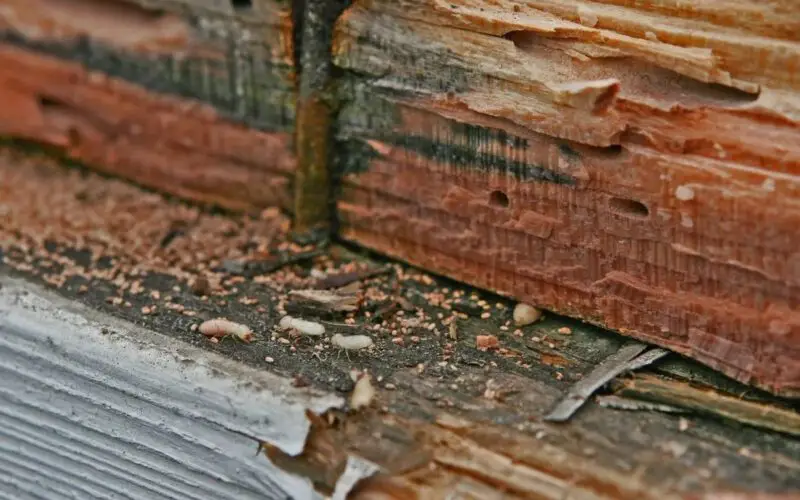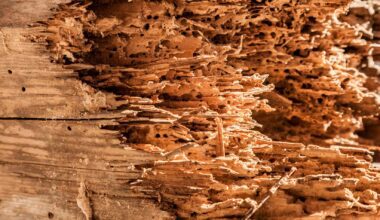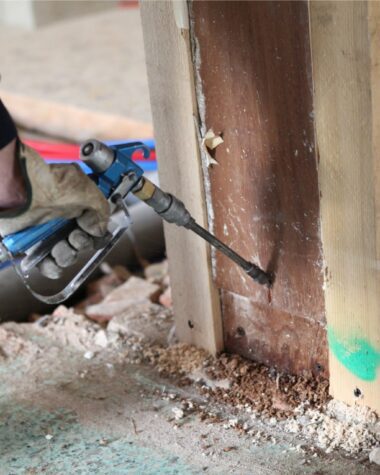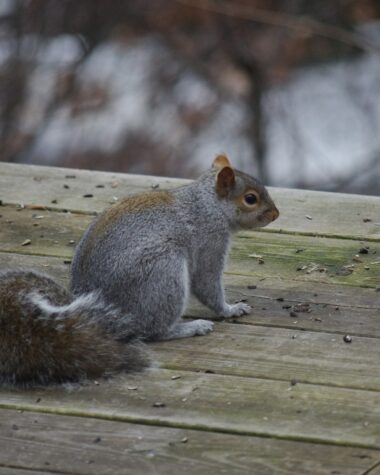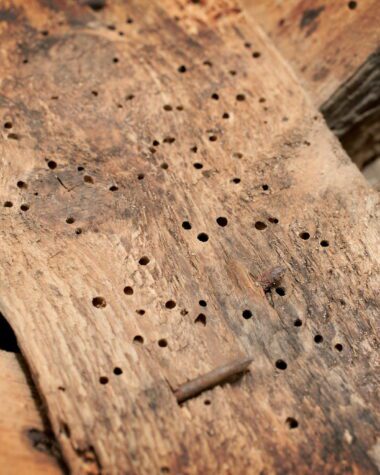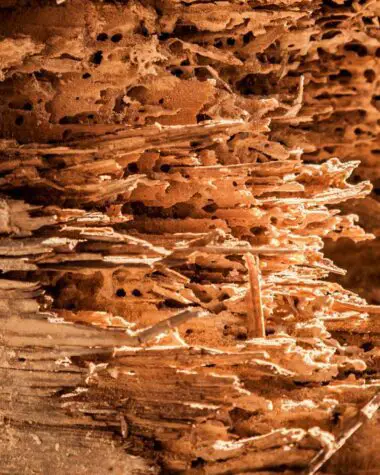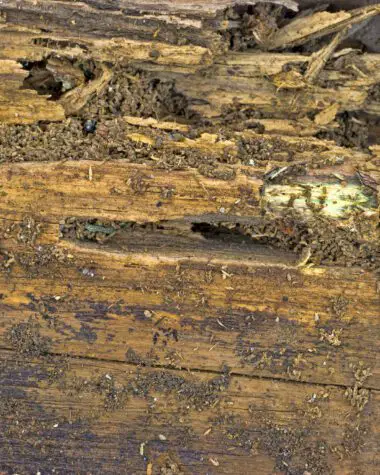Wood infestation, when left untreated for years, can cause severe irreparable damage. According to Orkin Pest Control, US residents spend $5 billion yearly on pest damage and repair. Once an infestation causes serious problems, it can cost you thousands for repair and control.
So before it’s too late to save your wood structures and furniture, you can take immediate action by observing and identifying suspicious signs that may indicate a possible wood infestation in your area.
Also, some experts can help with your wood infestation inspection. Just ensure you follow the guides and prepare your area before the inspection. Here are useful tips about wood infestation assessments and an easy-to-follow guide when preparing for an inspection.
Signs of Wood Infestation
If you suspect a possible wood infestation in your area, you can look for key pieces of evidence that may indicate signs of wood-destroying pests. Here’s a list of easy-to-spot wood infestation signs.
Mud tubes
Most wood-destroying insects create tubes and tunnels out of dirt, mud, and wood particles, which act as their way when traveling from their nest and around the wood they feast on. These mud tubes are easy to spot because they are usually as thick as a pencil and extend in length.
So, once you see these tunnels, usually made up of wood and soil, you can start tracing them until you reach the actual nest of the pests. By then, you can easily eliminate the critters.
Wood damage
Another effective way to inspect a possible wood infestation is by knocking on your wood. If it sounds hollow and feels almost breaking, it’s a sure sign of pests activity inside the wood. Termites usually cause these damages.
There might be no sign of mud tunnels from the surface of the wood, but you can actually spot tunnels from the interior. If the infested spot has a rippled or crushed effect, you can poke a hole into it and expose the insects living inside the wood.
Related Post: Help Is Here: Why Termites Eat Wood And How To Stop It
Frass
Frass is a pest dropping of combined fecal matter and wood dust. They can appear like granular pellets in the shape of ovals or look like whitish-yellow fine powder usually found near an infested wood. It is created after the pests consume and decompose the wood parts.
Another thing, be careful not to confuse frass with normal dust or dirt because it is actually a serious sign of wood infestation. Frass can be identified depending on the species of pest that invades your wood. It can be termite waste or particles from carpenter ant activity.
Buckling paint
You may also notice bubbles or peel on your painted wood structures and furniture. These signs may indicate a pest activity inside the wood. The insects create space between the paint and the wood surface to access moisture and air, causing buckling paint.
Insect body parts
This indicator may be easy to spot, although most wood-destroying insects are small. Around your infested wood, you may often see dead bodies of insects. You can also notice piles of wings, legs, and other tiny parts of these critters. By then, it is easy to suspect that these pests are living on your property.
Exit Holes
Wood-destroying insects usually make their own passage through tunnels that are connected to their entry and exit points. If you spot round or oval-shaped holes on your wood surface, this may indicate that pests live inside the wood. Wood-boring insects usually cause these holes.
Related Post: How To Get Rid of Wood Borers
Crumbling Wood
In extreme cases of wood infestation, you may notice weak floorboards and furniture that indicate a more serious problem. You can also spot crumbling wood around the corners or edges of your wood structure. This clearly shows that you need to take serious action against these pests.
Key Areas To Inspect
Wood-destroying pests often thrive in areas that are easily accessible and suitable for their survival. They usually inhabit confined spaces, dirty areas, and humid environments. These spots are the best key areas to start your wood infestation inspection.
Here’s a list of areas you must evaluate carefully to catch these wood critters.
Wooden structures
Obviously, wood pests will choose to live near a wooden structure or even inside the wood. So if you haven’t used any insect-repellant treatment during construction, you should be extra careful when monitoring your wooden structures because they are too vulnerable to an infestation.
Wood fences
Some insects need soil to survive, which makes wood fences and other wood near the ground vulnerable to pest attacks. You may notice that the part of the wood directly in contact with the soil is always the most damaged part or the spot where the infestation usually starts.
Cracks
Cracks in expansion joints, walls, or even floors are the common entry points for pests. As much as possible, you need to ensure there are no accessible cracks in your property, or else the insects can easily invade your area.
Deadwood
The falling dead leaves and branches are very attractive to pests if your property is near trees. Make sure you quickly dispose of any tree limbs prone to pest activity to keep your area safe from infestation.
Firewood
Firewoods are usually full of wood-destroying pests. They can have eggs and larvae inside, which are unnoticeable and can easily spread to other wooden structures and furniture. The best way is to have separate storage for firewood, which is away from your good wood and at least 20 feet from your house.
Wood Mulch
Wood mulch can be very luring to pests. These serve as their food, and the moist environment can be their habitat. If you worry it can trigger wood infestation, you can use special wood mulch such as the chips or bark from cypress or cedar trees. This type of wood mulch has natural insect-repellent properties that are effective against pests.
Attics and Basements
Other areas in your home that often have pests are your basement and attic, especially if they are not regularly cleaned or monitored. Insects may live in damp basement floorings or attic roofs, causing severe damage.
Wood Infestation Inspection Process
If you need professional help, you can call a company and schedule a wood infestation inspection. Set up the date and ensure you are available at home to give them proper knowledge about your house or any structures and areas you want to be assessed.
Other companies do not require specific preparation before the inspection, but others follow several measures to get ready. The first important thing is to check if the technician can easily access key areas, like your attic, basement, garage, or crawl space.
A day before the inspection, take any items from the areas and clear any blocking that may limit access to the spaces. This way, the inspection can be done more easily and less time-consuming.
The experts will check any signs of infestation and pest activities from the interior and exterior of your property. The entire process of inspection may take time, depending on your property size and the accessibility of your woodwork. But in general, it usually takes about several minutes.
Once the inspection is done, the technician will discuss evidence and signs of infestation, their recommended solution, and the quote for the necessary treatment.
Conclusion
Wood infestation can be a real problem if left untreated for years. The damage can be severe, costing you thousands of money for repair and control. Before it’s too late, it will be better to take immediate precautions to identify early signs of a possible infestation on your property.
You can monitor on your own or ask for professional help from experts. By doing so, you can prevent severe infestation and maintain your wood structures and furniture in a budget-friendly way.
If you need a more detailed guide about a wood infestation, you can check available resources about relevant topics that may help you. Learn more about pests that can possibly infest your home, from wood-destroying insects to wood-decaying fungi.
